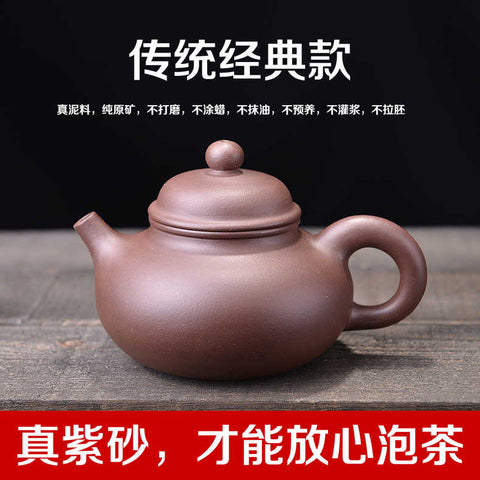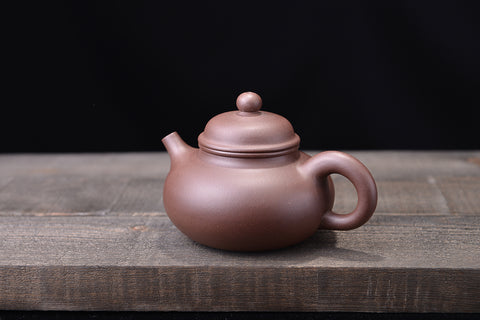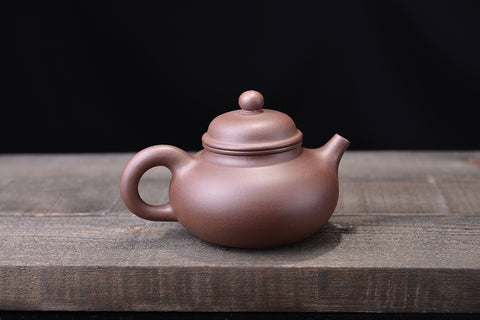
Shi Potian talks about Zisha: the grouting pot of the basic knowledge of Zisha
Share
If you often wander around the purple sand pot market, you must have heard of "grouting pots" (also called "grouting pots"). Many buyers of teapots give up grouting pots very much, and many purple clay teapot lovers spend their first tuition on grouting pots. So what is the relationship between the grouting pot and the purple sand pot, and how to identify the grouting pot?
"Gouting" itself is a process in ceramic manufacturing. In the late 1950s and early 1960s, the purple sand industry borrowed it to improve productivity. At the beginning, the purple sand ore was used to grind it into a slurry, and pour it into the pre-made gypsum mold. Because the gypsum has strong water absorption, the pot blank can be obtained after taking off the mold in a short time. But in fact, this practice has made the pot deviate from the original intention of Zisha. The purple sand raw material ground into mud no longer has the original sandy composition after molding, and its performance in all aspects is greatly reduced.

An important feature of purple sand mud is its good plasticity and easy molding, but it is more troublesome to make a pot blank after grinding into a fine mud, because the raw material of purple sand is relatively viscous, which makes it more difficult to trim this kind of pot blank. So the process failed. However, with the subsequent technological innovation and the subsequent revival of the purple clay teapot market, the "grouting" teapot appeared again. This time, I don’t even use purple sand ore to prepare mud, but take some other clay plus “water glass” (the so-called water glass is the aqueous solution of sodium silicate, which is widely used as adhesive and leak-stopping agent in the construction industry. )production. At this time, no matter in terms of raw materials or craftsmanship, this kind of grouting pot can no longer be classified as a purple clay pot. But now there are still a large number of grouting pots on the market that are painted with a layer of purple sand mud and sold as purple sand pots.

The price of the grouting pot is very low because of the low cost of raw materials and process, and the quality is also low. A grouting pot is usually only a few dollars, and even if it is sold as a tea set, it will generally not exceed 100 yuan. If you come across a "purple clay pot" with an unusually low price and many other cups and saucers as a bonus, be careful. At this time, as long as you carefully observe the pot in your hand, you will find various clues. The grouting pot, because the raw material is mud, so the cross-section looks very delicate, without any sandy texture, and it feels a bit greasy when fingers slide over it. At the same time, because the grouting pot is made of non-purple clay and fired with purple sand, it generally looks very rough. It's not purple sand, it can't be refined even if you want to be exquisite...

In addition, the appearance of the grouting pot looks bright and unglamorous, dry and harsh, and very reflective. It seems to be plastic, which is very unnatural. Even if it is painted with purple sand mud, it cannot be concealed. In terms of the details of the pots, the level is generally relatively low, because no purple sand artist is willing to waste energy and skills on such fakes, and grouting pots are generally produced and sold in batches, lacking the effort of a single person.

The original grouting pot lost the unique character of the purple clay pot, and the current grouting pot is no longer a purple clay pot. If you love pots and buy pots, you will always have to pay tuition fees, but it is not worth paying in this kind of place! Fortunately, there is always a huge difference between real Li Kui and fake Li Gui. Zisha pots and grouting pots can be easily distinguished as long as you understand their production principles and observe the real objects carefully. Friends don’t need to worry too much.

